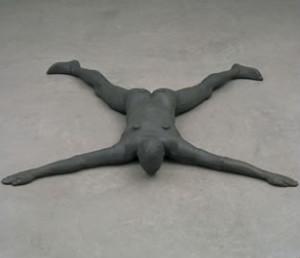The great Norman cathedral at Gloucester in the English Severn Valley is itself a glorious sculpture, 900 years old and maintained still by local craftsmen. Throughout those centuries it has been the focus for the finest stonemasons, woodcarvers, stained glass glaziers and metal workers. Each generation has added its particular touch; its architectural, artistic and spiritual expression; utilising man’s progressive mastery of materials and physics. From the massive Romanesque piles that support the main roof to the tracery of the fan vaulting in the cloister, the cathedral projects the evolution of passion, power and emotion. It is a heart of stone that would be unmoved by the creative brilliance that these dedicated artisans poured into their work.
Yet, far from being a mere historical relic, the cathedral is determined to remain relevant as the epicentre of life in this rural county. For some weeks it has been the controversial yet perfect setting for modern sculptural works, forged largely in the foundries of the nearby Stroud Valley. For just over one more week, the cathedral has been the breathtaking setting for an exhibition of 75 works by 48 artists, Crucible 2010.
Crucible is a dramatic collaboration between the Gloucester Cathedral and the Pangolin Gallery that pushes the boundaries for many traditional worshippers. The sight of Damien Hirst’s “St Bartholomew Exquisite Pain” standing naked, tortured and proud in the central aisle of the quire is disturbing and stunning. The stark brutality of Antony Gormley’s spread-eagled “Close V” lying face down in an antechamber is amplified by the soft gold Cotswold stone of the floor it faces. It is brilliantly placed to catch the eye from the top of the steps as one strolls through the cloisters.
The gallery’s inspired use of the environment lifts the works just as the building is intended to lift the spirit. Eduardo Paolozzi’s bronze giant, “Vulcan” looms over anyone entering the cathedral, placed perfectly in perspective with the cathedral tower behind. Daniel Chadwick’s delicately balanced mobile drifts silently across the full width of the nave, emulating the movement of the spheres above the pews.
At every turn, in every space both inside the cathedral and in the grounds, visual challenges and stimuli draw the eye. That so much of it was produced by artists living in the county is testament to centuries of creativity that was initially inspired by the building of the cathedral itself. Go if you can.
It’s free and is only there until 7th November. http://www.crucible2010.co.uk/





